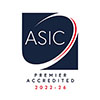Education 5.0: How Diploma Holders Can Leverage AI, Blockchain, and AR/VR
19th September 2025

The transition from Education 4.0, which emphasized digitalization and access, to Education 5.0 marks a significant leap forward. This new paradigm is not just about integrating technology, it’s about balancing, digital innovation with human-centered learning. Education 5.0 aims to create classrooms that are inclusive, interactive, and future-ready, equipping students with skills for a rapidly changing world.
Technologies like Artificial Intelligence (AI), Blockchain, and Augmented/Virtual Reality (AR/VR) are at the heart of this movement. But adopting these tools requires more than technical familiarity, it demands creative teaching strategies, adaptability, and confidence.
For diploma holders and aspiring educators, programs such as an International Post Graduate Teaching Diploma course, offer the training needed to master these strategies and apply them successfully.
In this blog post, we’ll explore what Education 5.0 means, how AI, Blockchain, and AR/VR are reshaping teaching, and how diploma holders can prepare themselves to lead this transformation.
What is Education 5.0?
Education 5.0 represents a learner-centric approach where technology enhances, not replaces, the human element of teaching. Unlike previous models that emphasized automation and digital access, Education 5.0 focuses on:
- Personalization: Every student learns differently. Education 5.0 leverages technology to customize learning journeys that adapt to pace, style, and interest.
- Collaboration: Students and teachers can now collaborate globally through virtual platforms, creating opportunities for cross-cultural learning and exchange.
- Innovation: Schools and training institutes encourage experimentation with cutting-edge tools like AI tutors, AR labs, and blockchain records.
- Sustainability and Ethics: Education 5.0 emphasizes preparing students for not just careers, but for building sustainable, responsible societies.
For diploma holders, embracing Education 5.0 means moving beyond being knowledge deliverers, they become facilitators of critical thinking, creativity, and innovation.
AI in Education: Personalization at Scale
Artificial Intelligence (AI) is no longer just a futuristic idea—it’s already revolutionizing education. With AI, teachers can:
- Offer adaptive learning platforms that adjust the content based on how quickly or slowly students grasp concepts. For instance, a math platform might give advanced learners tougher problems while offering extra practice to those struggling.
- Automate assessments and grading, freeing up time for teachers to focus on mentoring rather than paperwork.
- Provide AI tutors and chatbots to give students round-the-clock academic support, reducing dependency on classroom time alone.
For diploma holders, this creates the possibility to deliver truly individualized education. By learning how to integrate AI tools, educators can ensure that no student is left behind, while also challenging advanced learners to reach higher goals.
Blockchain: Transparency and Trust in Learning
Blockchain may sound technical, but its application in education is straightforward and powerful. It can:
- Secure digital credentials such as diplomas and certificates that cannot be forged, making global recognition of qualifications easier.
- Maintain transparent academic records, so students moving between institutions, or even countries, can easily transfer verified credits.
- Enable smart contracts that automatically execute tasks like enrollment, fee payments, or certification without administrative delays.
For diploma holders, familiarity with blockchain means being prepared to participate in a future where education systems are borderless and globally trusted. It also allows teachers to help students understand and navigate technologies they will encounter in professional settings.
AR/VR: Immersive Learning Experiences
Augmented Reality (AR) and Virtual Reality (VR) are redefining how students engage with knowledge:
- Virtual field trips let students visit the Great Wall of China or the Amazon rainforest without leaving their classroom.
- AR-based science experiments allow learners to manipulate molecules or dissect virtual organisms in safe, interactive environments.
- Skill training simulations are invaluable for professional courses—medical students can practice surgeries in VR, while engineering students can work on simulated machines.
Teachers who know how to integrate AR/VR tools can make lessons not only engaging but also deeply memorable, turning passive learning into active exploration. For diploma holders, these skills are becoming highly valued, as schools and institutions worldwide invest in immersive technologies to improve student outcomes.
How Diploma Holders Can Prepare
Utilizing the potential of AI, Blockchain, and AR/VR is not just about technical skills, it’s about pedagogy, creativity, and confidence. Diploma holders should focus on:
- Continuous professional development: Staying updated with the latest technological advancements.
- Blending traditional and digital methods: Knowing when to use face-to-face strategies and when to enhance them with technology.
- Encouraging critical and ethical thinking: Helping students not only use these tools but also question their implications responsibly.
- Experimenting gradually: Piloting small projects with AI or AR before scaling them to larger classes.
This is where professional learning programs play a vital role. An International Post Graduate Teaching Diploma courses are designed to train teachers in innovative methods. These programs don’t just provide exposure to technology, they show educators how to apply these tools in real classrooms with confidence and measurable success.
Final Thoughts
Education 5.0 represents a future where technology and humanity coexist in classrooms to create inclusive, engaging, and future-focused learning. Diploma holders who adapt to tools like AI, Blockchain, and AR/VR will not only improve their teaching but also prepare students for global careers in an increasingly digital world.
By pursuing advanced training, such as a Live Online International Post Graduate Teaching Diploma course, educators gain the skills to implement cutting-edge strategies and transform their classrooms. In doing so, they position themselves as innovators and leaders in the new era of education.
Frequently Asked Questions (FAQs)
Q1. What is Education 5.0?
Education 5.0 is a model that integrates AI, Blockchain, and AR/VR into classrooms, creating personalized, immersive, and globally relevant learning.
Q2. How does AI help students?
AI enables personalized learning, automates assessments, and provides real-time support, ensuring each student progresses at their own pace.
Q3. Why is Blockchain important in education?
Blockchain ensures secure, verifiable credentials, transparent student records, and streamlined administrative processes.
Q4. How can diploma holders learn these strategies?
By enrolling in the International Post Graduate Teaching Diploma course, educators gain hands-on experience with modern technologies and teaching innovations.












